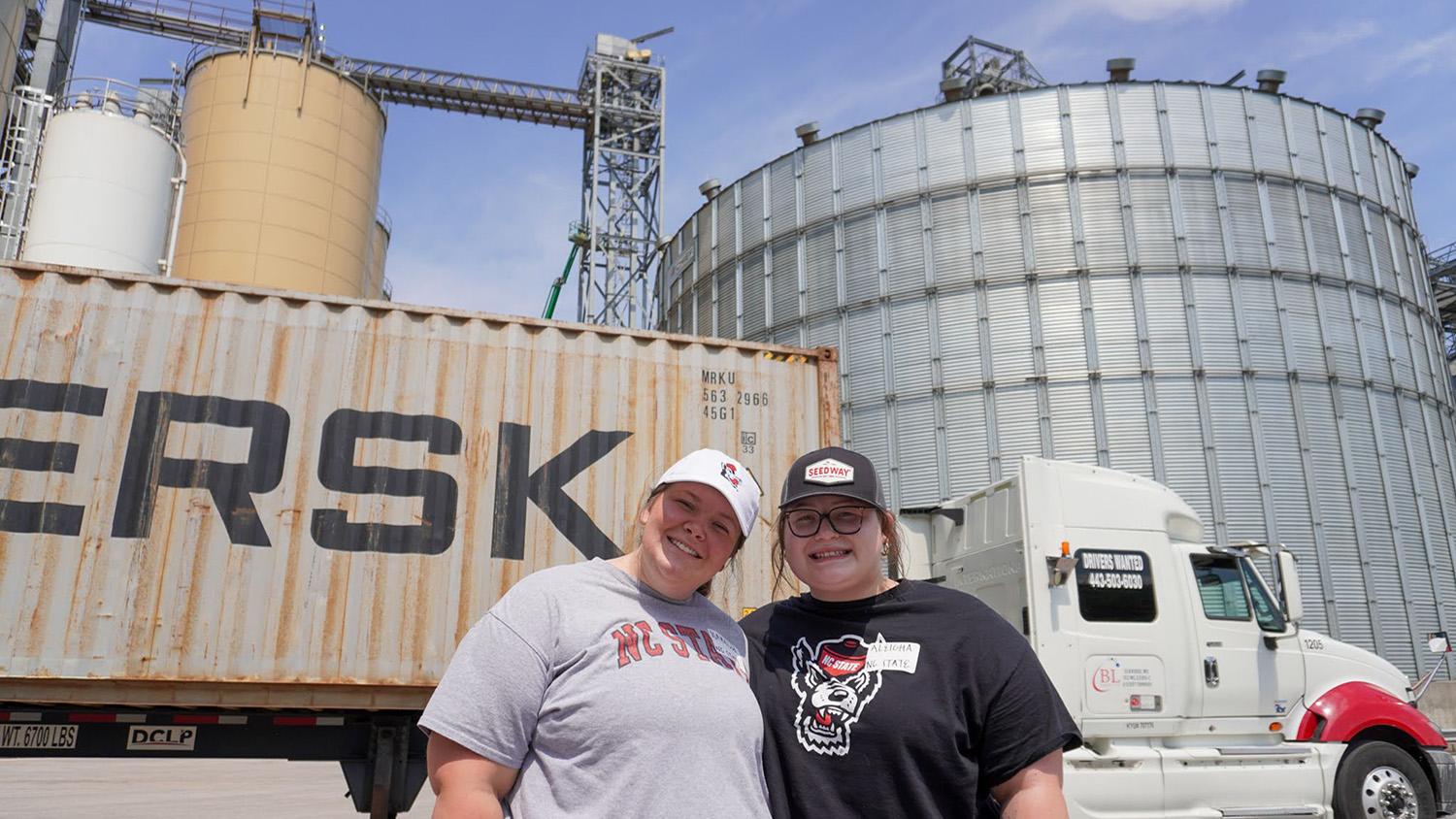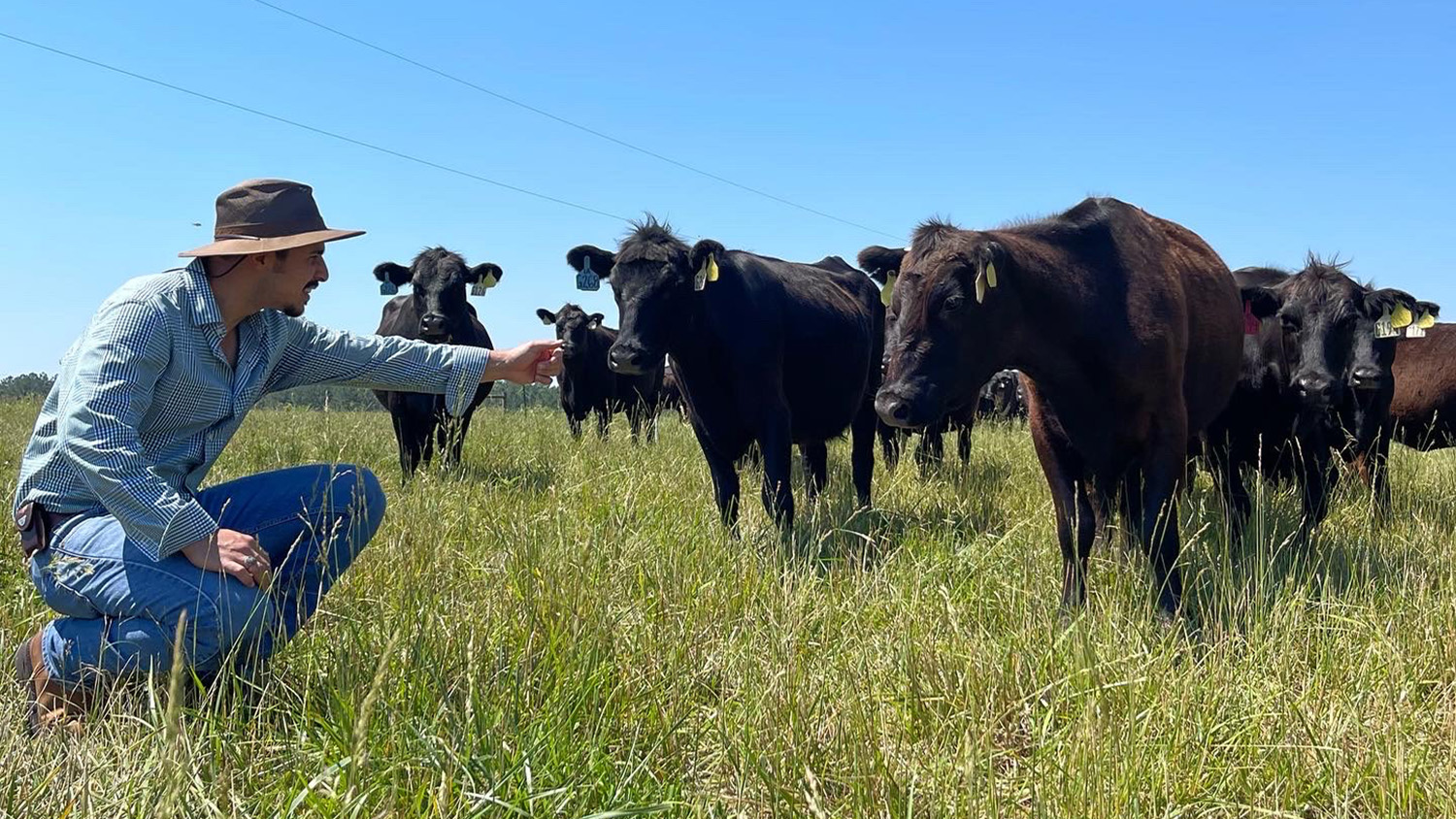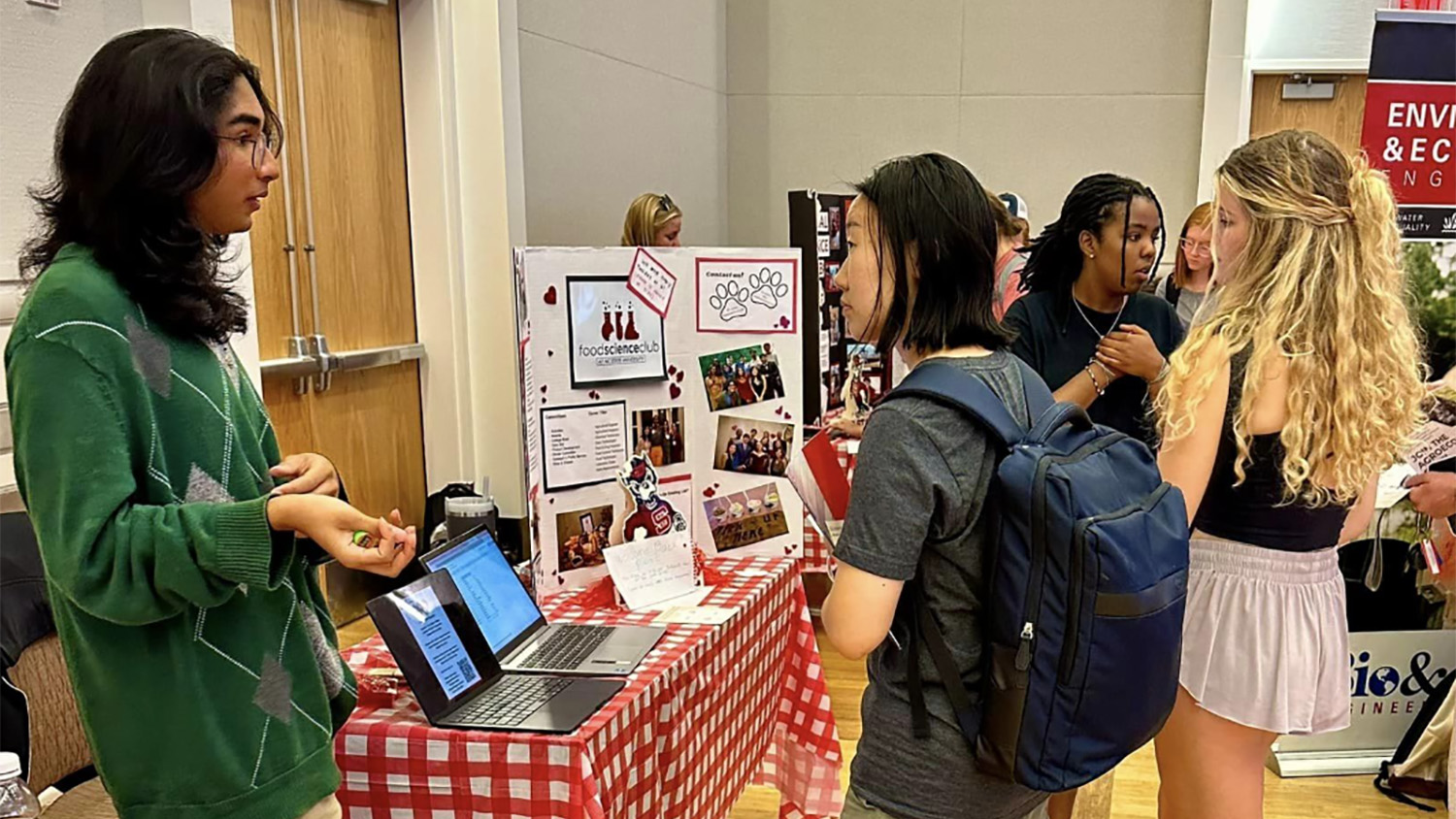College Profile: José Alonso
Growing up amid farm fields and orange groves along the Mediterranean coast of Spain, José Alonso couldn’t help but develop a fascination for plants. Over the years, he has cultivated that curiosity through research and technology development that, in 2014, landed the NC State researcher on Thomson Reuters Corp.’s list of the world’s most influential scientific minds.
The multinational mass media and information firm bases its list on the number of citations a scientist has had in papers published between 2002 and 2012. It acknowledges the listed scientists as “the people who are on the cutting edge of their fields, … performing and publishing work that their peers recognize as vital to the advancement of their science.”
Alonso, a professor in the College of Agriculture and Life Sciences’ Department of Plant and Microbial Biology, made the list in the area of plant and animal sciences. With his wife and longtime scientific partner, Dr. Anna N. Stepanova, he runs a lab that studies hormone interactions in plants.
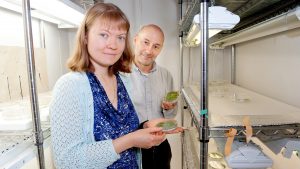
The lab takes a multifaceted approach, blending genetics, molecular biology, genomics, metabolomics, cell biology, computation and more in pursuit of answers to some of the most fundamental questions about how plants grow and respond to their environment. The lab also develops new genetic technologies designed to speed plant biology studies.
It is work that has implications, albeit indirectly, for agriculture, the profession of generations of Alonso’s Spanish ancestors. Alonso supposes that he would have been a farmer himself were it not for his father’s death when José was just six months old.
With the family farming chain broken, Alonso felt free to pursue biology studies at the University of Valencia. As he got deeper into those studies, he became increasingly interested in molecular biology and genetics. He went even deeper in his graduate studies at a national research institute in Spain, where he studied the molecular biology of oranges.
“It was good for the family,” he says, “Oranges were an important crop where I grew up, so they understand that. But the molecular part they didn’t understand.”
Alonso’s family’s understanding of his research likely got even harder when he came to the United States in the 1990s to do postdoctoral work at the University of Pennsylvania. While there and at the Salk Institute in California, he studied Arabidopsis, a flowering plant that has become such an important model system in plant biology that NASA intends to grow it this year in containers on the moon.
<!–

–>
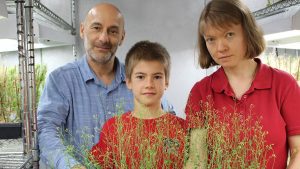
Arabidopsis was the first plant to have its entire genome sequenced, and Alonso had a small part in that. But the main thrust of his postdoctoral work was to get to know more about ethylene, a plant hormone that plays a role in ripening fruits, opening flowers, growing roots and shedding leaves.
Alonso’s goal, which continues today, involves understanding, at a molecular level, how the hormone is produced, how cells sense its presence and what happens in the plants’ cells after that sensing.
“If you are a plant cell, you receive a lot of signals – signals that indicate that it’s hot, for example, or that something is chewing you. Because you are in a plant, you can’t run or hide like an animal can. You have to just stay there and deal with it. You have to sense what is happening in your environment, take this information and somehow change your own metabolism to cope with that,” Alonso explains.
“Depending on what is happening in the environment, you have to have a program telling you, ‘Ah, it’s time to flower’ or ‘It’s time to grow’ or whatever else it is you need to do. You have to integrate the signal from the outside with that internal program.
“So how does that happen on the molecular level? That’s the basic question we try to understand,” he explains.
As Alonso attempted as a postdoc to find out more about the molecular-level processes involving ethylene in a plant’s response to its environment, he created a large collection of Arabidopsis mutants.
“Basically what we did was generate more than 150,000 plants, each one of them with a mutation in a different place in the genome,” he says. “And what we did was we mapped where the mutation was and then made seeds for the mutants available to everybody.”
The collection revolutionized the way in which scientists study gene functions in plants. Today, if scientists are interested in a particular gene, rather than spending four or five years looking for it, as they had to do when Alonso was a postdoc, they can simply go to a website and order (from an Ohio-based stock center) the Arabidopsis seeds that are missing the gene in question.
“The scientists can then consider what’s different about the plant, and, by doing so, gain a better understanding of what that particular gene does,” Alonso says.
Thus far, scientists have requested seeds from the mutant plants more than 1 million times. “That’s a huge amount of interest,” Alonso says, noting that the original paper on the collection has generated more than 3,500 citations in scientific papers exploring such agricultural important topics as how plants respond to pathogens and to light.
Since joining NC State University’s faculty in 2001, Alonso and Stepanova have continued to focus on tool development and on figuring out more about how plant hormones communicate signals and how these signals influence growth.
But over the years they have shifted away from studying what happens with a single hormone to looking at the more complex interactions among hormones. Most recently, their focus has been on auxin and ethylene.
One of their lab’s most important findings is related to ethylene’s regulation of the production of auxin, a hormone key to plant development. They found that ethylene activates auxin biosynthesis in root tips, and then auxin travels to sensitize cells where they divide, enabling them to respond properly to ethylene, Alonso says.
“These studies have allowed us to decipher the first complete auxin biosynthetic pathway in plants, and we still work on auxin biosynthesis,” Alonso explains. “We now know which genes are involved, but we don’t know how these genes are regulated. So now we are asking, ‘What is regulating these genes?’”
Meanwhile, Alonso wants to make answering such questions easier and faster for him and his colleagues. His lab was one of the first to find ways to adapt the ribosome footprinting technique to a plant species. Previously used in mouse, worm, human and yeast genetics, ribosome footprinting is opening the way for investigating in great detail the mechanisms at work in protein synthesis and its regulation.
The lab has also adapted the genetic engineering approach called recombineering for plant biology. The technique – developed by other scientists for use in bacteria genetics – allows scientists to replace, delete and insert genes, creating multiple mutations simultaneously.
Thanks to this work, NC State now has a plant recombineering center that creates genetic material not only for Alonso’s lab but for scientists worldwide. Right now, that work is limited to Arabidopsis, but, as happens often with scientific advances made with Arabidopsis, Alonso says, the technique can be adapted for other plant species, including food crops such as rice, corn and tomatoes.
He is concerned, though, that funding cuts for research on the model organisms, and for basic science in general, will slow the practical application of basic science for the generation of scientific solutions for today’s problems.
“Most of the big advances in society started with basic science,” he says. “There has to be some people doing basic science research, understanding how things work, and then other people figuring out how we can apply this for the benefit of society. Without both, we will not progress very much.”
Alonso believes that keeping basic plant science moving forward means maintaining resources for research in model plants like Arabidopsis, and so he’s become involved in international efforts toward those ends. He is an elected member of the North American Arabidopsis Steering Committee, which hosts the International Conference on Arabidopsis Research when it’s held in North America. Last summer, he served as co-chair of the conference, which attracted 625 researchers from 34 countries.
While Alonso works to grow support for the worldwide Arabidopsis community, he and Stepanova also strive to inspire the next generation of scientists. Their lab has a website, Plants4Kids.org, filled with plant experiments, in English and Spanish, for elementary-school students and their parents. Once a month at a downtown Raleigh museum, they give children plant seeds and explain ways they can use the seeds in science experiments.
He leaves those engagements especially happy when he encounters children eager to know more. Such curiosity is critical, he says, for scientific advancement.
And it’s likely that the scientific discoveries that Alonso has made are due in part to his own insatiable curiosity – and his restlessness in pursuing that curiosity.
Alonso not only creates more time for research by combining the tasks of commuting and exercising through riding a bike to work, he also limits his social life. And he foregoes regular vacations. During vacation time, he sets aside the tasks of running the laboratory for the chance – “the fun,” he calls it – of conducting more hands-on work at the laboratory bench.
“I want to understand how things work, and that definitely keeps me busy,” he says. “When you get into these types of questions, there are always more follow-up questions you want to address.
“You can never know enough, right?”
– Dee Shore
- Categories:
